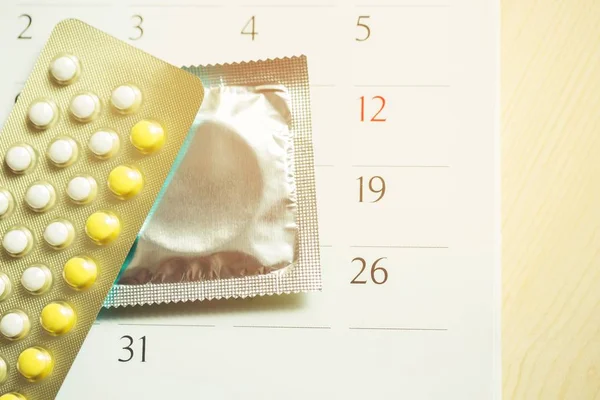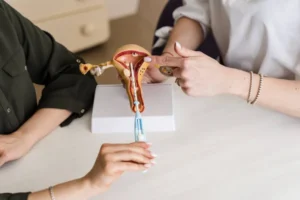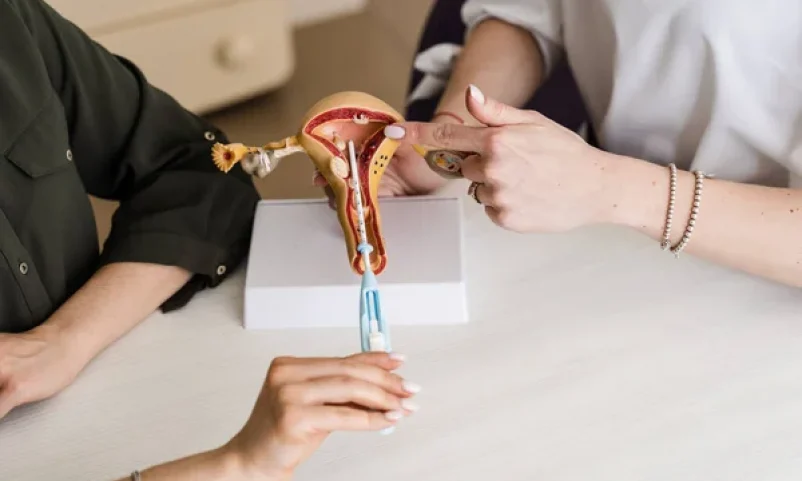If you’ve recently had an intrauterine device (IUD) inserted, you might be wondering when, or if, it’s alright to resume sexual activity. This is a common and valid concern, especially with questions about discomfort, timing, and contraceptive effectiveness.
Your body may need a short period to adjust after insertion, and the decision to resume sex depends on a combination of medical guidance and how you’re feeling physically and emotionally. In this guide, we’ll walk you through what to expect, based on current clinical recommendations and considerations.
When Is It Medically Okay to Resume Sex?
Doctors generally advise waiting at least 2 weeks after IUD insertion before having sexual intercourse. This rest period allows the body to heal, reduces the risk of infection, and gives the IUD time to settle properly in the uterus.
Even if you feel physically fine earlier, it’s important to prioritise medical guidance over personal readiness. Resuming too soon may increase the chances of complications, including infection or IUD displacement.
Does It Hurt to Have Sex After Insertion?
Some people experience mild cramping, spotting, or pelvic discomfort in the days after getting an IUD. These symptoms are usually short-lived but can make sex uncomfortable.
Once the 2-week waiting period has passed, if you’re still experiencing pain or discomfort during intercourse, it’s best to check in with your doctor to rule out any potential issues, such as misplacement or infection.
Is Your IUD Effective Right Away?

Understanding when your IUD starts providing contraceptive protection is essential, especially if you’re planning to resume sex soon after insertion. The timeline for effectiveness depends on the type of IUD you receive: copper or hormonal.
It’s also important to remember that while IUDs are highly effective, they’re not considered foolproof from the moment of insertion in all cases. Let’s break down the timelines based on clinical guidance.
Copper IUD
The copper IUD is typically considered effective immediately after insertion, regardless of where you are in your menstrual cycle. This is because copper acts as a spermicide, disrupting sperm mobility and function upon contact.
It can also be used as a form of emergency contraception if inserted within five days after unprotected sex. However, it’s always best to confirm this option with your healthcare provider, especially if emergency contraception is your immediate concern.
Hormonal IUD
A hormonal IUD typically takes 1 week to become effective. During this time, it’s recommended to use a backup method, such as condoms, to ensure you’re protected while the IUD’s hormonal effects take place.
What Might You or Your Partner Feel During Sex?

After getting an IUD, it’s normal to wonder whether you or your partner will notice anything different during sex. The good news is that the IUD is placed inside the uterus, far beyond the vaginal canal, so it’s generally not something you’ll feel during intercourse.
However, the strings attached to the IUD, used by doctors to check placement or remove the device, can sometimes be noticed, especially soon after insertion. Let’s explore this in more detail.
Can You Feel the IUD or Strings?
You will not feel the IUD itself during sex. It’s placed securely in the uterus and does not enter the vaginal space. However, the strings that extend slightly through the cervix into the upper vagina might be detectable.
Some partners may feel the strings during penetration, especially if they’re still stiff immediately after insertion. Over time, these strings usually soften and curl upward, becoming less noticeable.
If you or your partner are consistently aware of the strings and it affects your comfort, a doctor can assess their length and adjust them if needed.
What to Do If There’s Discomfort
If the strings feel sharp, pokey, or bothersome, avoid trying to trim or reposition them yourself. Only a qualified healthcare provider should make any adjustments.
It’s also worth noting that sexual activity does not dislodge or “push out” the IUD, but expulsion can occur due to other factors, like strong uterine contractions. If discomfort persists or you suspect movement, it’s best to have the IUD checked by your doctor.
Can Sex Cause the IUD to Fall Out?
It’s a common concern, but sexual activity is not considered a risk factor for IUD expulsion. Clinical reviews confirm that the device sits securely inside the uterus, far beyond the reach of penetration, and isn’t likely to be dislodged by intercourse. Expulsion, while relatively rare, is more often linked to factors like uterine contractions during menstruation, postpartum changes, or the body’s natural response to a foreign object.
However, expulsion is a real possibility, and it tends to happen for reasons unrelated to sex. Understanding the actual causes can help ease unnecessary concern.
Most IUD expulsions occur due to uterine contractions, which may happen:
- During menstruation
- In the postpartum period, while the uterus is still shrinking
- If the body naturally responds to the IUD as a foreign object
Expulsion is more likely within the first three months after insertion. For this reason, it’s important to monitor any changes, like unusual cramping, heavy bleeding, or the inability to feel the strings, and follow up with your doctor if something feels off.
When Should You Use Backup Contraception?

Although IUDs are highly effective, there are specific situations where using backup contraception, such as condoms, is recommended. These instances often relate to the timing of insertion or potential issues with IUD placement.
Understanding when extra protection is needed can help reduce the risk of unintended pregnancy, especially during the adjustment period following insertion.
After Hormonal IUD Inserted Outside Menstrual Window
If a hormonal IUD is inserted outside the first seven days of your menstrual cycle, it may not offer immediate protection. In this case, doctors typically advise using backup contraception for seven days. This precaution allows time for the hormonal effect to take hold, primarily the thickening of cervical mucus, which helps prevent sperm from reaching an egg.
After Suspected Expulsion or String Changes
If you notice that the IUD strings feel longer, shorter, or are missing altogether, it could indicate that the device has shifted or been expelled. Until your healthcare provider confirms that the IUD is still correctly positioned, it’s best to avoid unprotected sex.
Using backup contraception during this time helps ensure continuous pregnancy prevention until your IUD’s placement is confirmed. If there’s any doubt, schedule a check-up as soon as possible.
Postpartum Healing Considerations
If you’ve recently given birth and are considering or already have an IUD, it’s important to understand how postpartum healing affects when you can resume sex, not just the presence of the IUD itself.
Healthcare providers usually recommend waiting about six weeks after delivery before having vaginal intercourse. This guidance applies regardless of whether an IUD has been inserted.
The main reason for this delay is to allow time for:
- Healing from vaginal tears or episiotomy
- Recovery after a C-section
- Resolution of lochia (postpartum bleeding and discharge)
While the IUD doesn’t interfere with your body’s healing, it’s not the determining factor for when sex should resume. Instead, focus on how your body is recovering and follow your doctor’s recommendations for postpartum care.
When to Contact Your Doctor

While mild discomfort and light bleeding can be part of the normal adjustment after IUD insertion, there are certain symptoms that should not be ignored. Contact your healthcare provider if you experience any of the following:
- Persistent or sharp pain during sex
This could indicate an issue with IUD placement or another underlying condition. - Heavy bleeding or new cramps several days after insertion
These symptoms may suggest that your body is not adjusting well to the device or that expulsion is occurring. - You or your partner feels something unusual, such as hard plastic
The IUD itself should not be felt during intercourse. If it is, it could mean the device has shifted. - You cannot feel the strings, or they seem significantly longer or shorter than before
Changes in string length can signal movement of the IUD and should be checked by a healthcare professional.
It’s always better to err on the side of caution. A quick check-up can confirm whether your IUD is in place and functioning as intended.
Final Thoughts: Listen to Your Body First
There’s no universal rule for when it’s the “right time” to resume sex after getting an IUD. What matters most is that you feel physically comfortable and your contraceptive protection is confirmed based on the type and timing of your IUD.
Some people are ready within days, while others prefer to wait a bit longer, and that’s perfectly valid. If you’re uncertain, speak with your doctor to address any lingering concerns or questions about your IUD’s placement and effectiveness.
Ultimately, your comfort and peace of mind are just as important as clinical timelines. Let your body guide you, and don’t hesitate to seek medical advice when needed.









